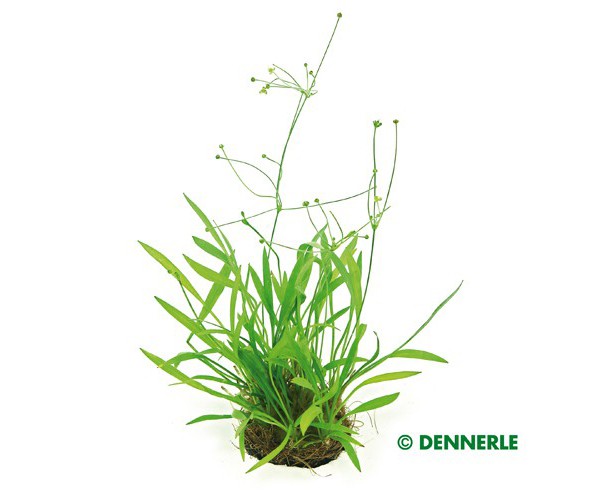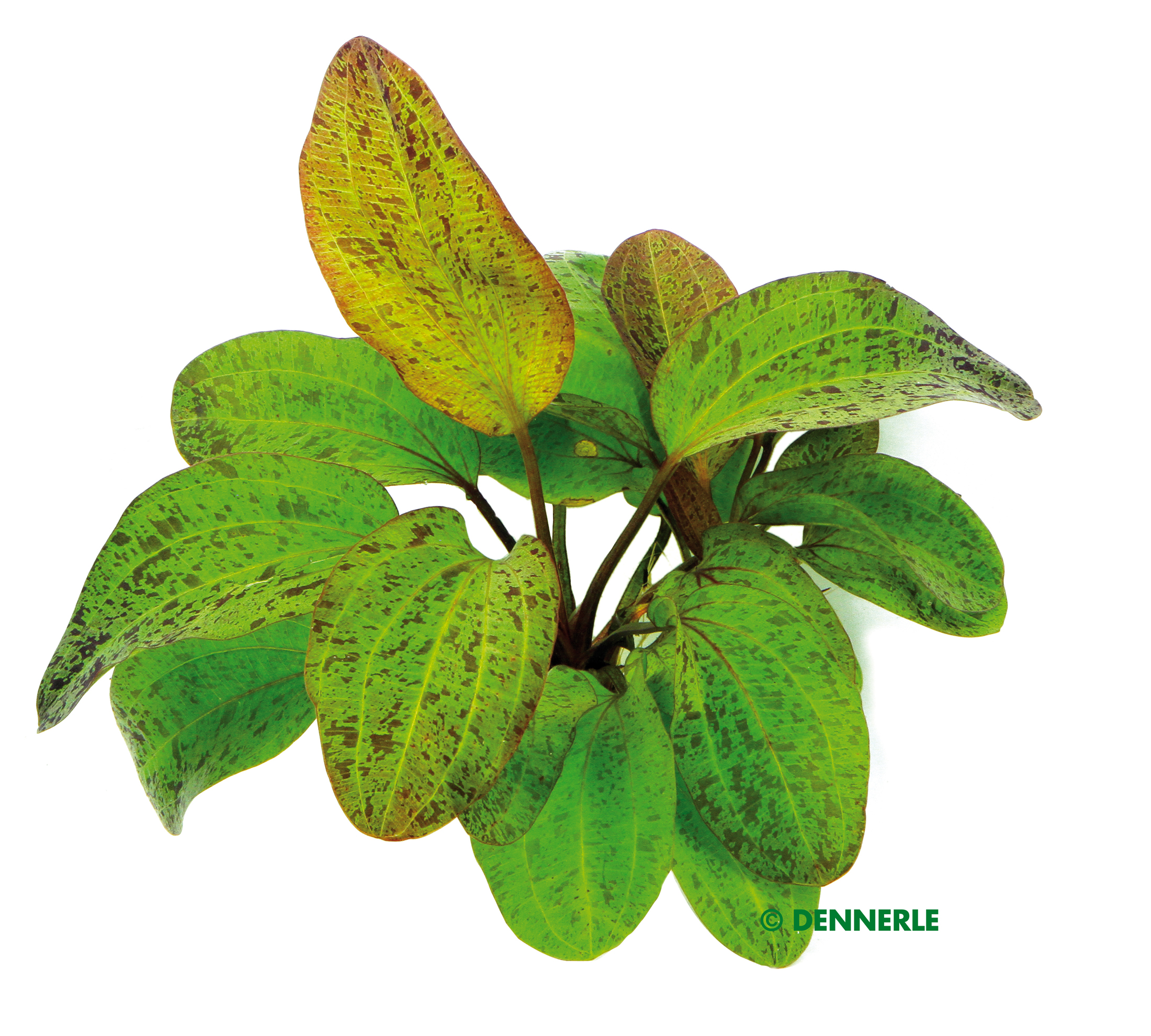Echinodorus XXL Blog
- Save up to 60%, with the great blog offers, you can find them at the end of the blog -
Echinodorus - variety for your aquarium
The beautiful sword plants, also called frogspoons, from the very species- and variety-rich genus Echinodorus belong predominantly to the swamp plants and originate from North and South America. They are excellent aquarium plants, quite variable in color, size and shape, and their wide variety really does offer something for almost every taste.
High nutrient requirements
Basically, Echinodorus species are root plants that anchor themselves firmly in the substrate and develop an impressive root network over time. We therefore recommend that Echinodorus not only be fertilized via the water column, but that they also be given a soil fertilizer or fertilizer balls. They are very grateful for this. As heavy feeders, Echinodorus need a lot of "food". For this reason, they are also good competition for algae.
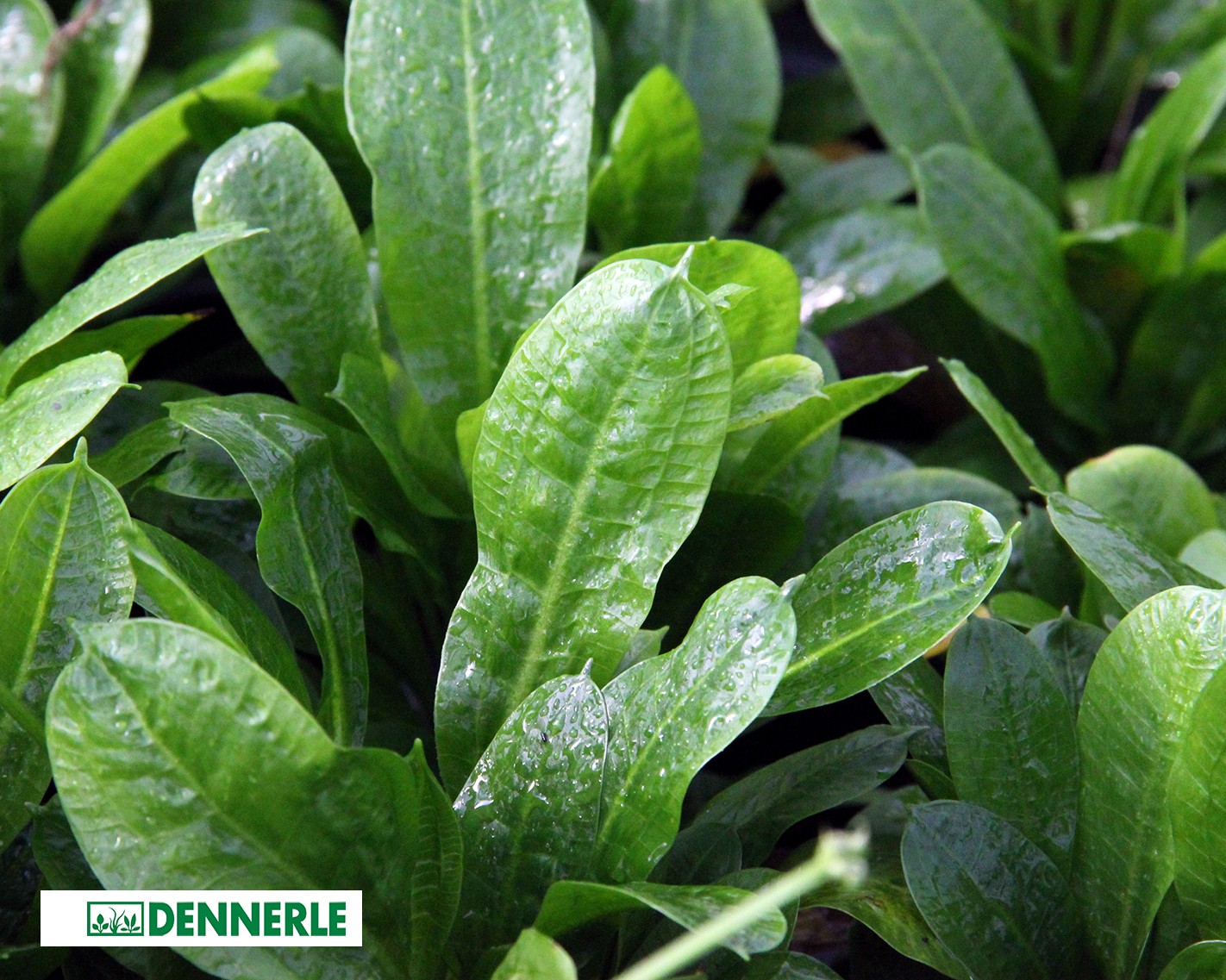
Growth habit
The strong leaf stems of an Echinodorus emerge from the soil in the form of a rosette. There is no lateral spreading via runners - however, with time the number of leaves and also their size increases, so that the plant as a whole naturally takes up more space than at the beginning. This can be kept in check by appropriate pruning. If necessary, simply remove the oversized leaves that are no longer so beautiful due to increasing age and then you can enjoy a freshly sprouting plant again. In time, a rhizome will be formed.
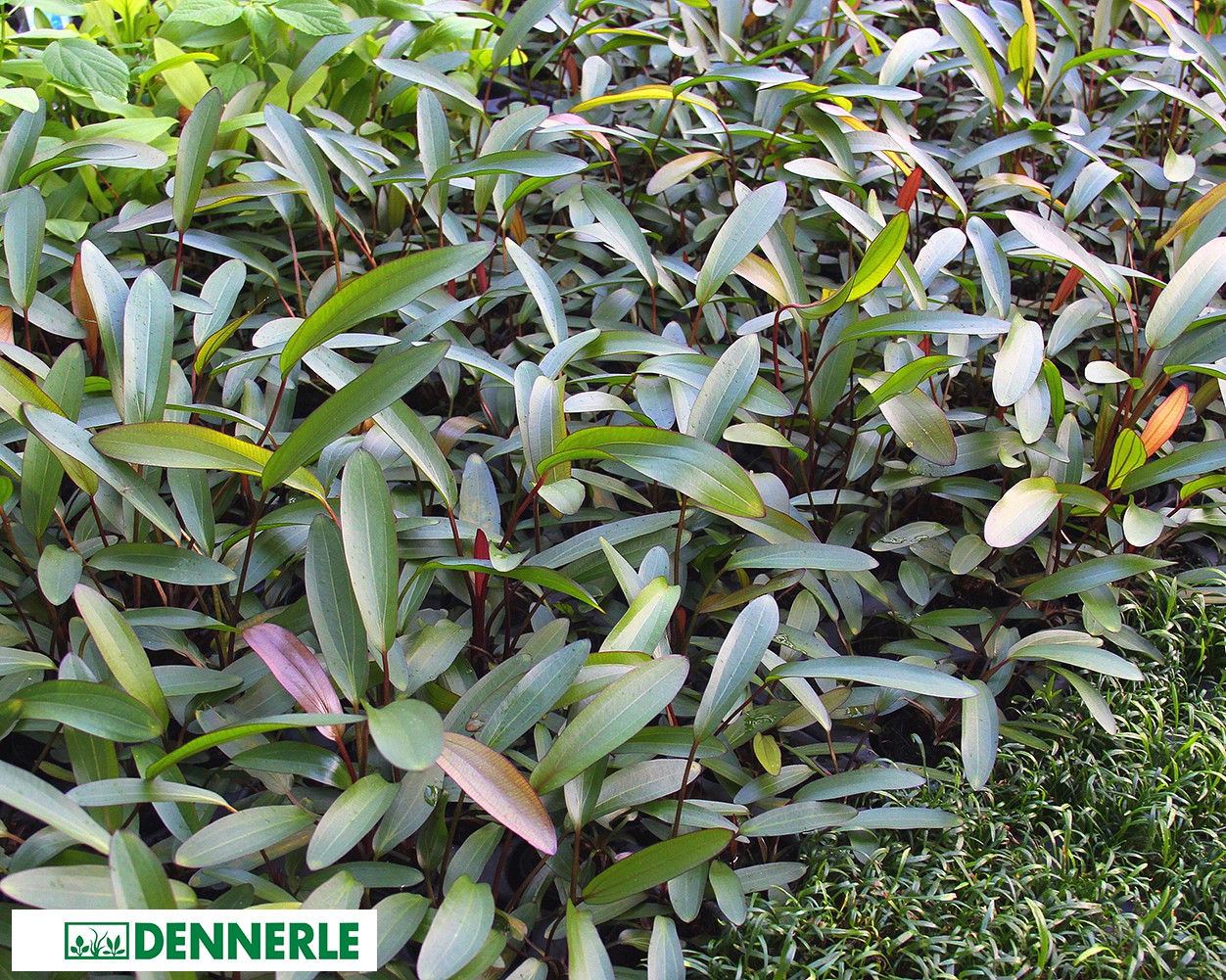
Needs of an Echinodorus
Basically, the genus Echinodorus prefers sunny locations in nature, so in the aquarium you should take this into account when choosing the right lighting. Of course, good lighting also necessitates a good and balanced supply of nutrients, both micro- and macronutrients. Then the echinodors shine in the most beautiful colors - in many varieties the new shoots surprise with contrasting colors such as red or brown.
Echinodorus do not have any special requirements for the aquarium. Medium to high light intensity, a water temperature of 22 to 28 °C and a good supply of micronutrients and macronutrients is sufficient. A CO2 fertilization is usually not mandatory, but can of course be supportive and strengthening.
Its size makes it a beautiful plant for the middle ground and background in medium to large aquariums. There are a very few Echinodorus species that remain smaller.
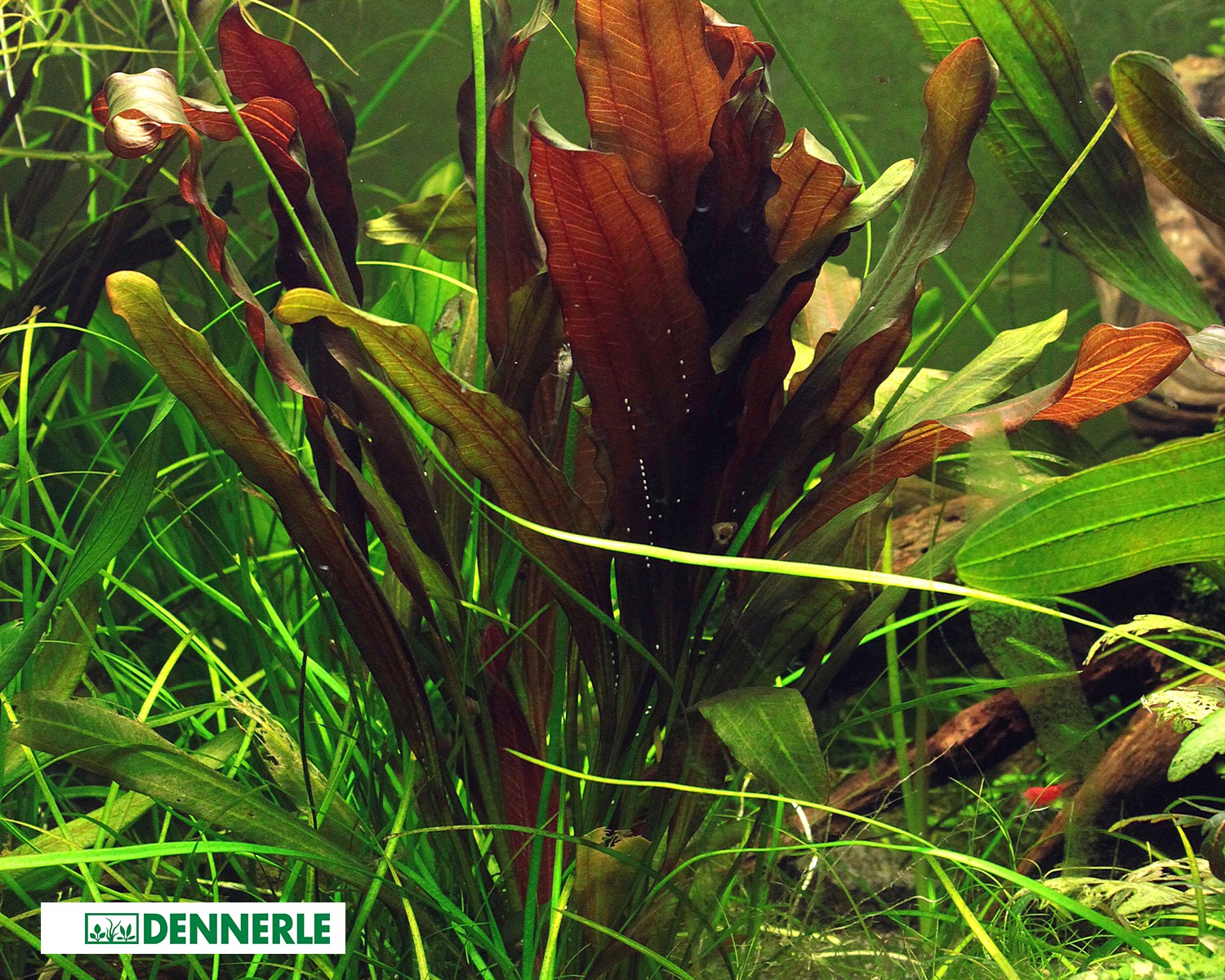
Flowering and propagation
Most sword plants will, at some point in their life, sprout a long stem that comes to flower above water. This is especially wonderful to look at in open aquariums! The small, but still very beautiful flowers are usually white with a yellow center. Small daughter plants then grow on these stems, which can be removed and planted after some time. This is a very easy way to propagate echinodors. With older plants, the rhizome that develops over time can be divided for propagation.
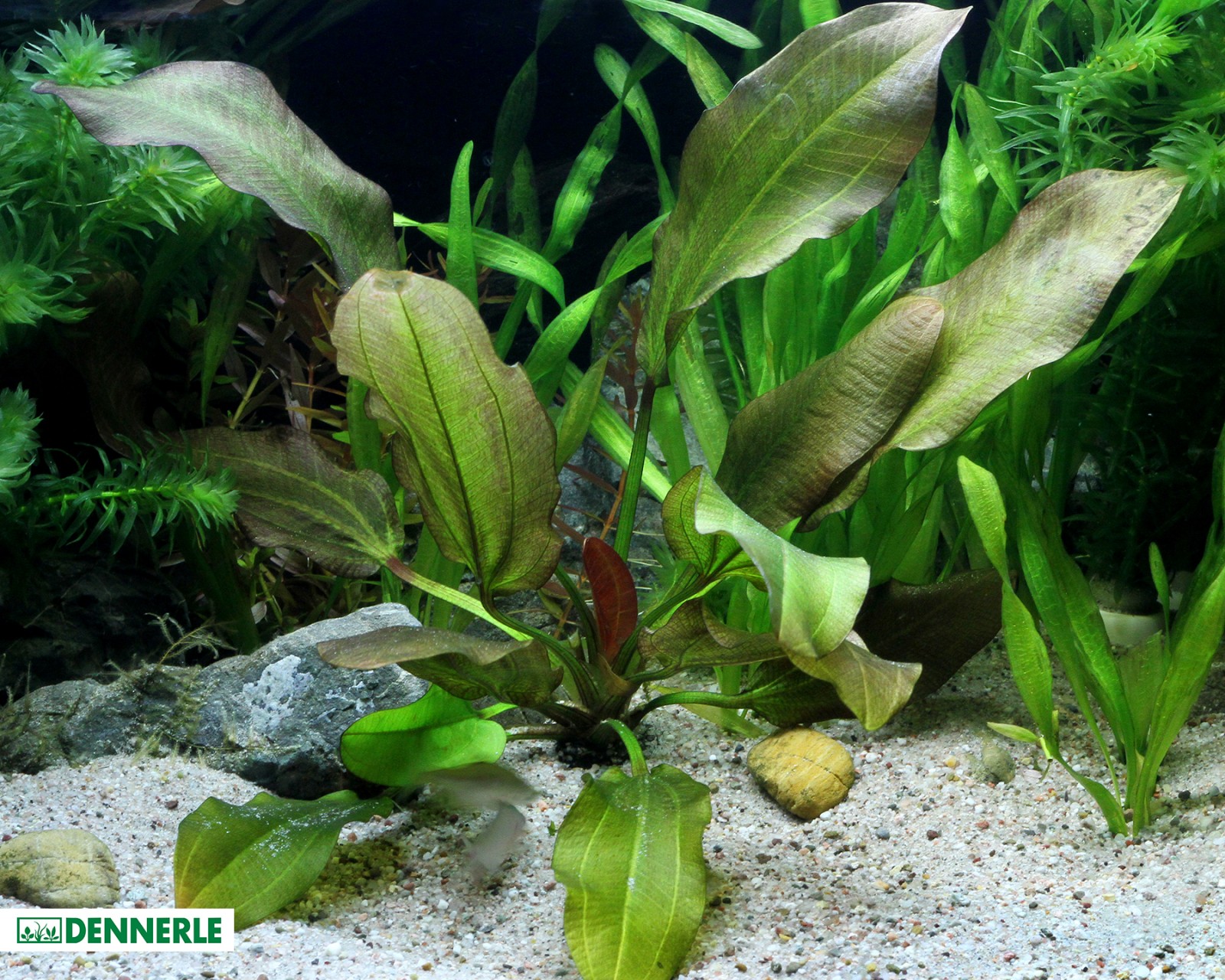
Echinodorus and fish
Unfortunately, many sucking catfish take a liking to the large, beautiful leaves of the sword plants and rasp them down to a transparent lattice. To curb this, aquariums with sucker catfish should always be well fed vegetables and other fresh foods - however, once the fish have acquired a taste for them, the only option is often to separate the fish from the plant.
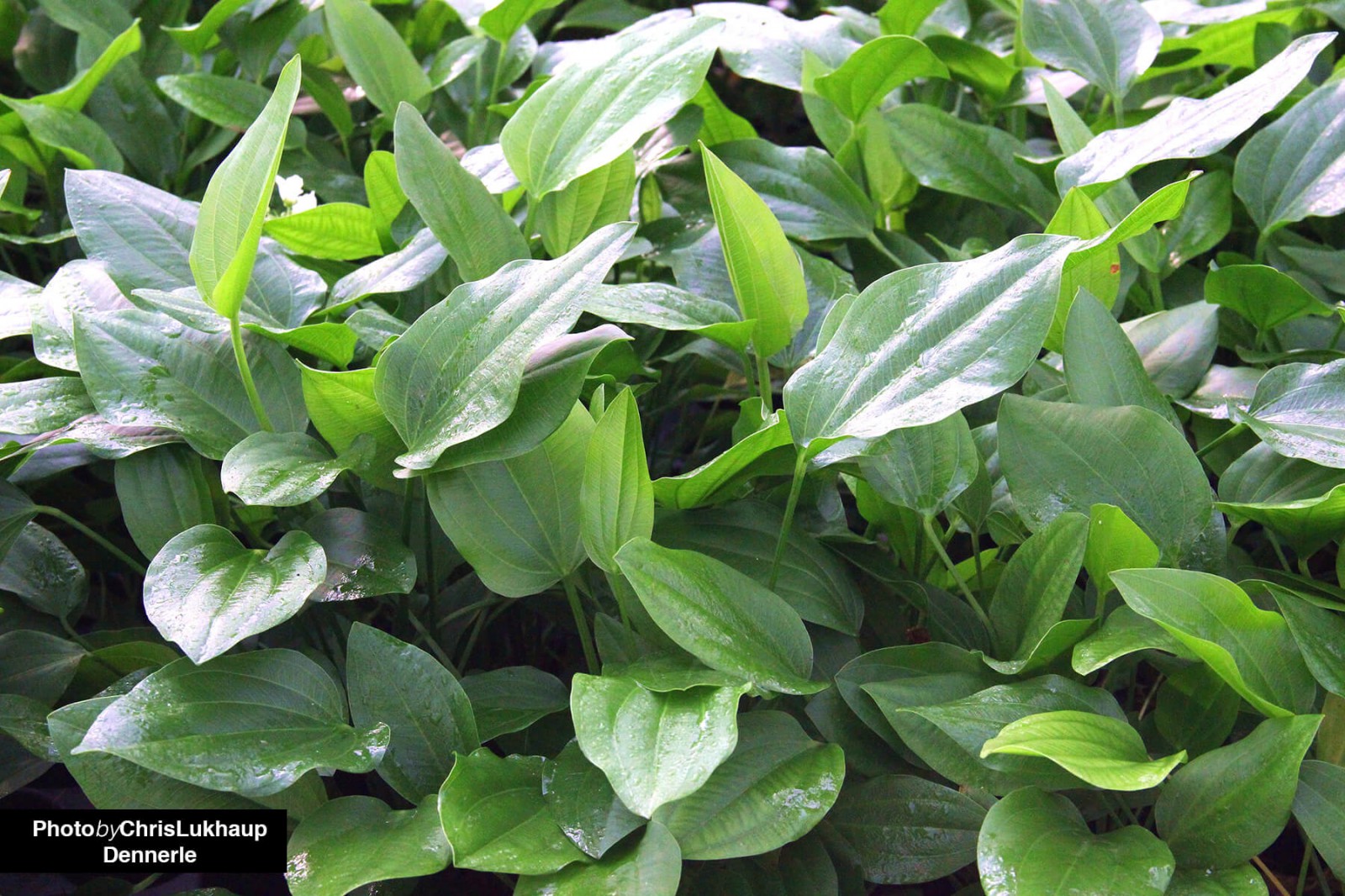
Echinodorus in the aquaterrarium or paludarium
Since Echinodorus are marsh plants, they can also be cultivated on the land part in terrariums with very high humidity. In this case, the emerse form often looks quite different from the aquarium form, especially in terms of color.
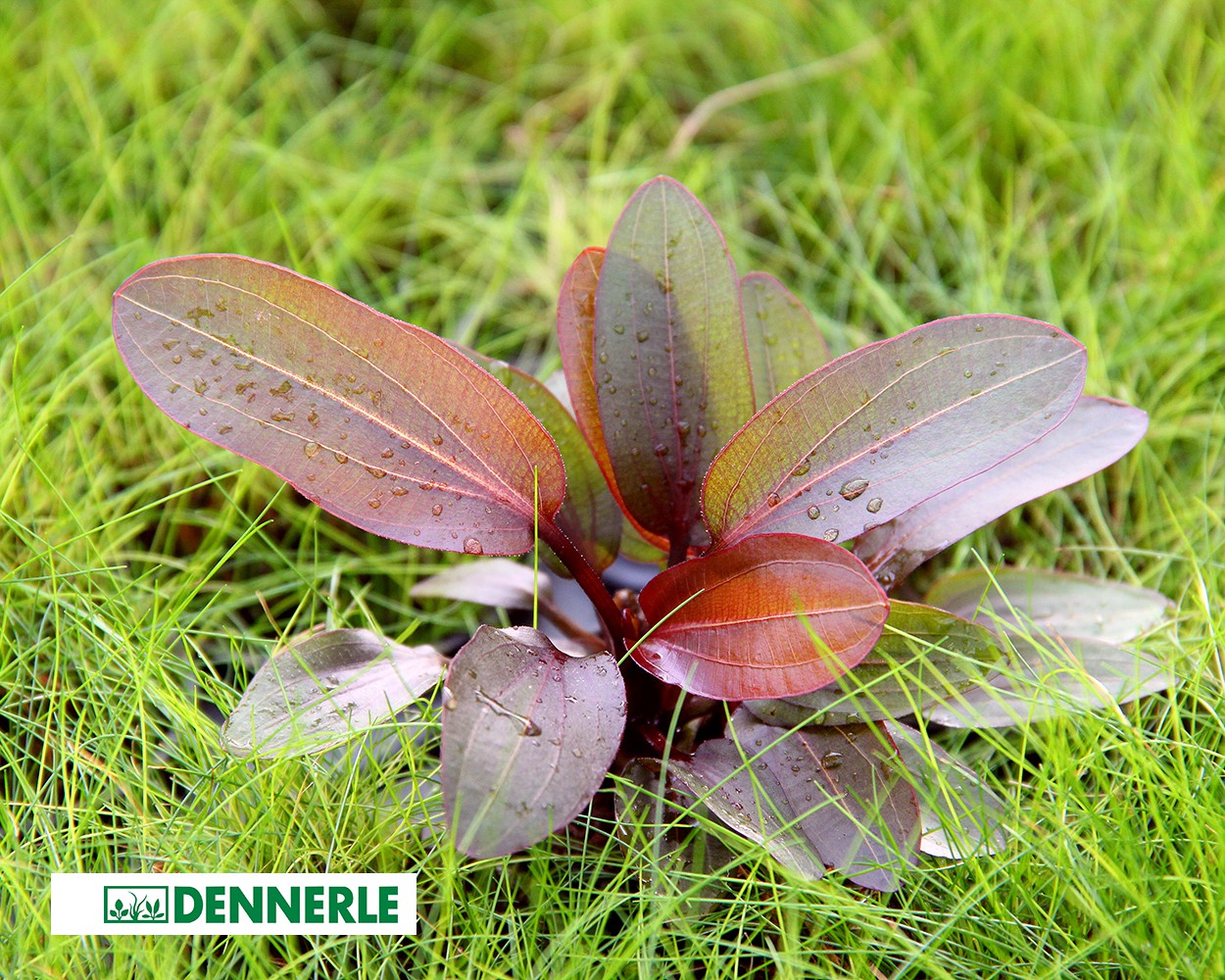
Variety of the Echinodorus family
Many varieties have been created by deliberate or even accidental crosses of individual species, which is why some Echinodorus plants no longer bear a species name, but only the genus name (Echinodorus) and then the variety name.
Echinodorus grisebachii "Parviflorus" - Samolus sword plant, Black Amazon sword plant
Also known by the trade name Echinodorus parviflorus. The nerves of the new shoots are of a dark reddish brown. This Echinodorus is not particularly demanding and still does well with medium light. It does not grow as fast as other varieties and with 15-25 cm it does not get quite as high, so it is also suitable for smaller aquariums. (Buy Echinodorus grisebachii "Parviflorus")
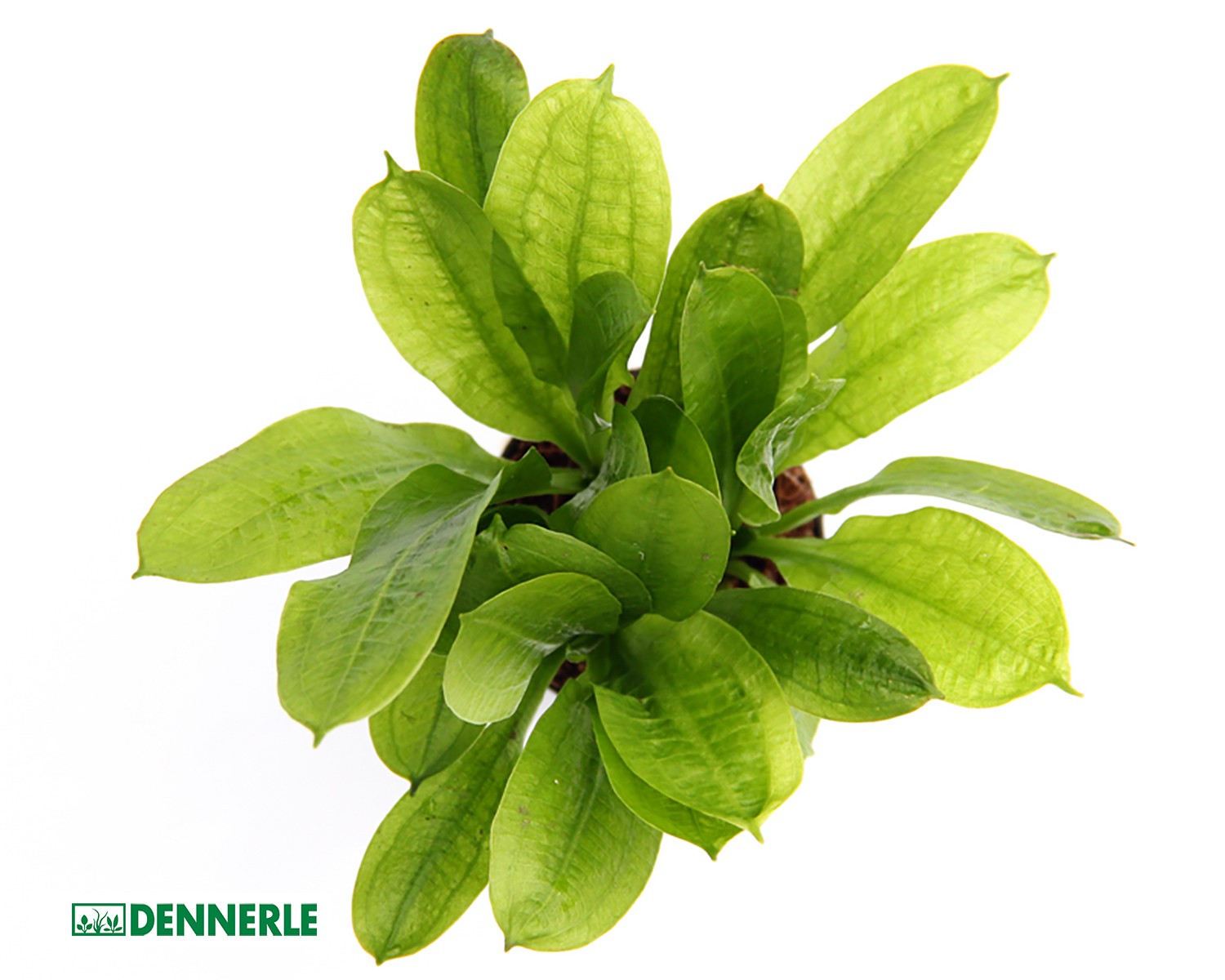 Echinodorus grisebachii "Parviflorus" - Samolus Sword Plant, Black Amazon Sword Plant
Echinodorus grisebachii "Parviflorus" - Samolus Sword Plant, Black Amazon Sword Plant Echinodorus grisebachii "Bleherae" - Large Amazon Sword Plant
Also known by its trade names Echinodorus bleheri or Echinodorus bleherae, sometimes Echinodorus rangeri or Echinodorus paniculatus. The pure green Great Amazon Sword Plant grows over 60 cm tall, making it an impressive specimen plant for large aquariums. With 3-6 cm leaf width and a large number of densely standing leaves, it looks simply stunning. (Buy Echinodorus grisebachii "Bleherae")
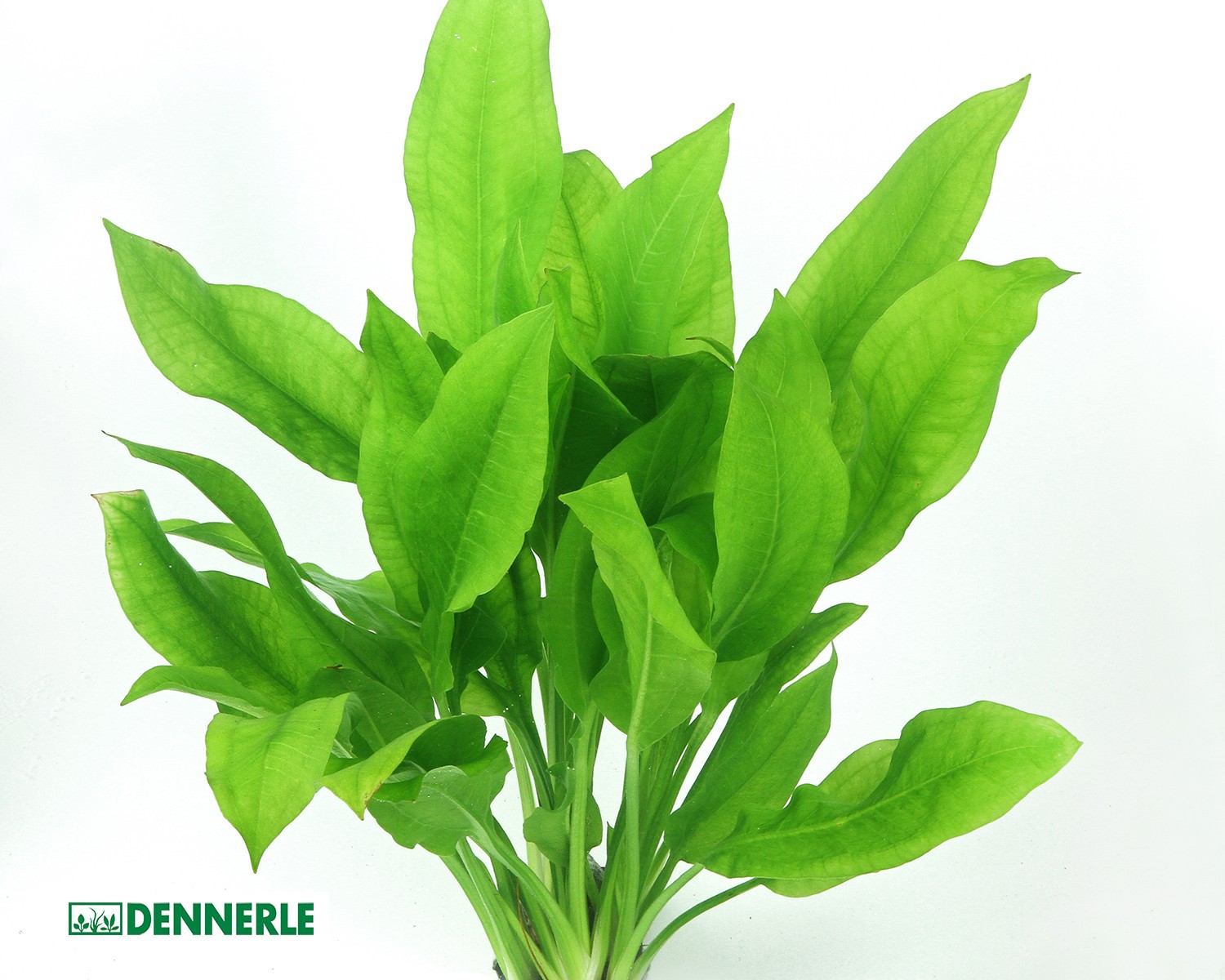
Echinodorus grisebachii "Bleherae" - Large Amazon Sword Plant
Echinodorus grisebachii "Amazonicus" - Narrow-leaved Amazon sword plant
Another variety of the shapely Echinodorus grisebachii is the narrow-leaved Amazon sword plant. It grows extremely well and fits well in aquariums from 200 l. Its leaf blades, up to 60 cm long and somewhat bent to the side, are light green and strikingly narrow. (Buy Echinodorus grisebachii "Amazonicus")
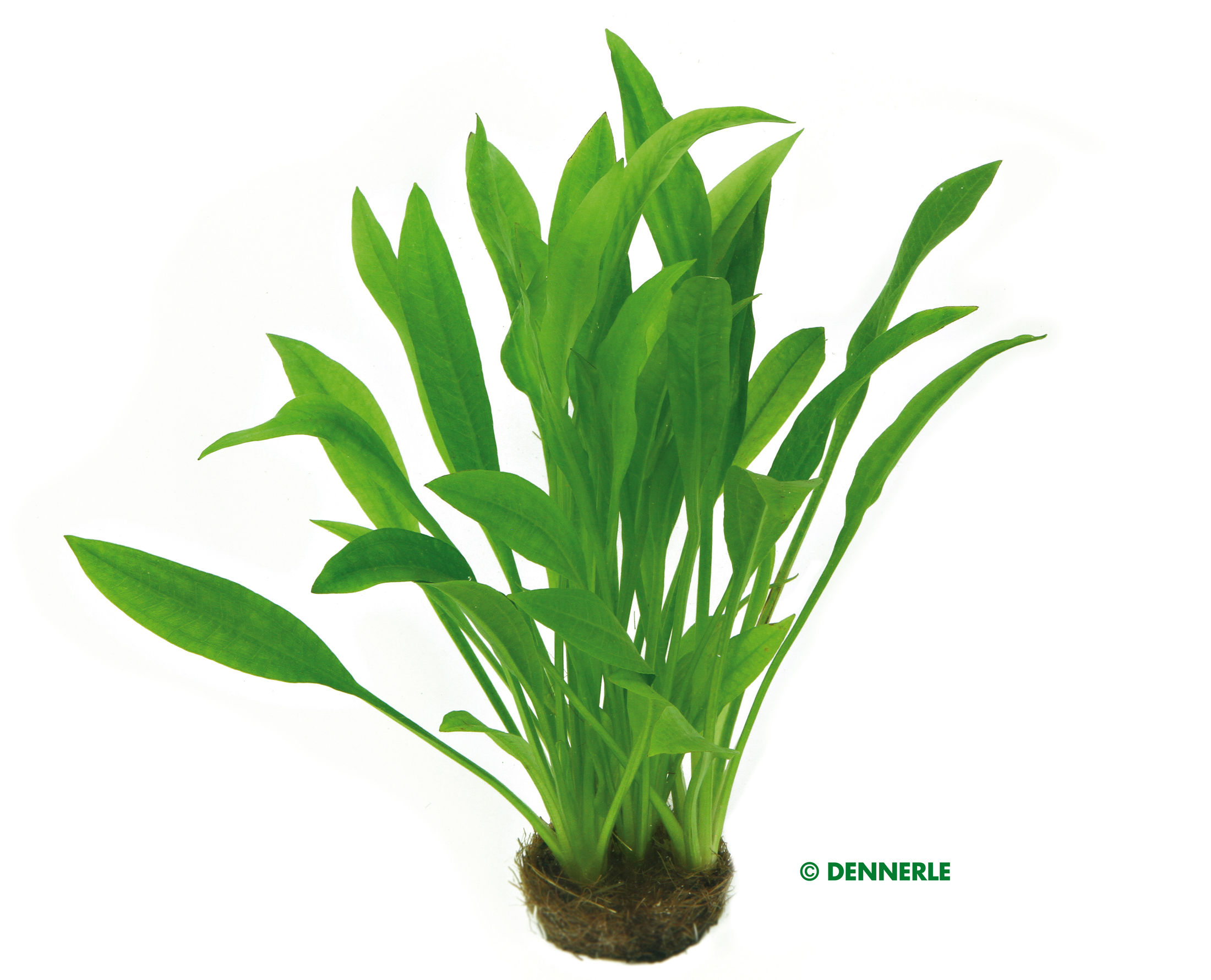
Echinodorus "Red Senna
This relatively new, underwater red-leaved, low-maintenance variety grows to about 40-50 cm tall, making it suitable as a solitary for the middle ground or background in rather larger aquariums. Its leaves are rather narrow to ribbon-like and appear elegant. In the terrarium the leaves are pure green. (Buy Echinodorus "Red Senna")
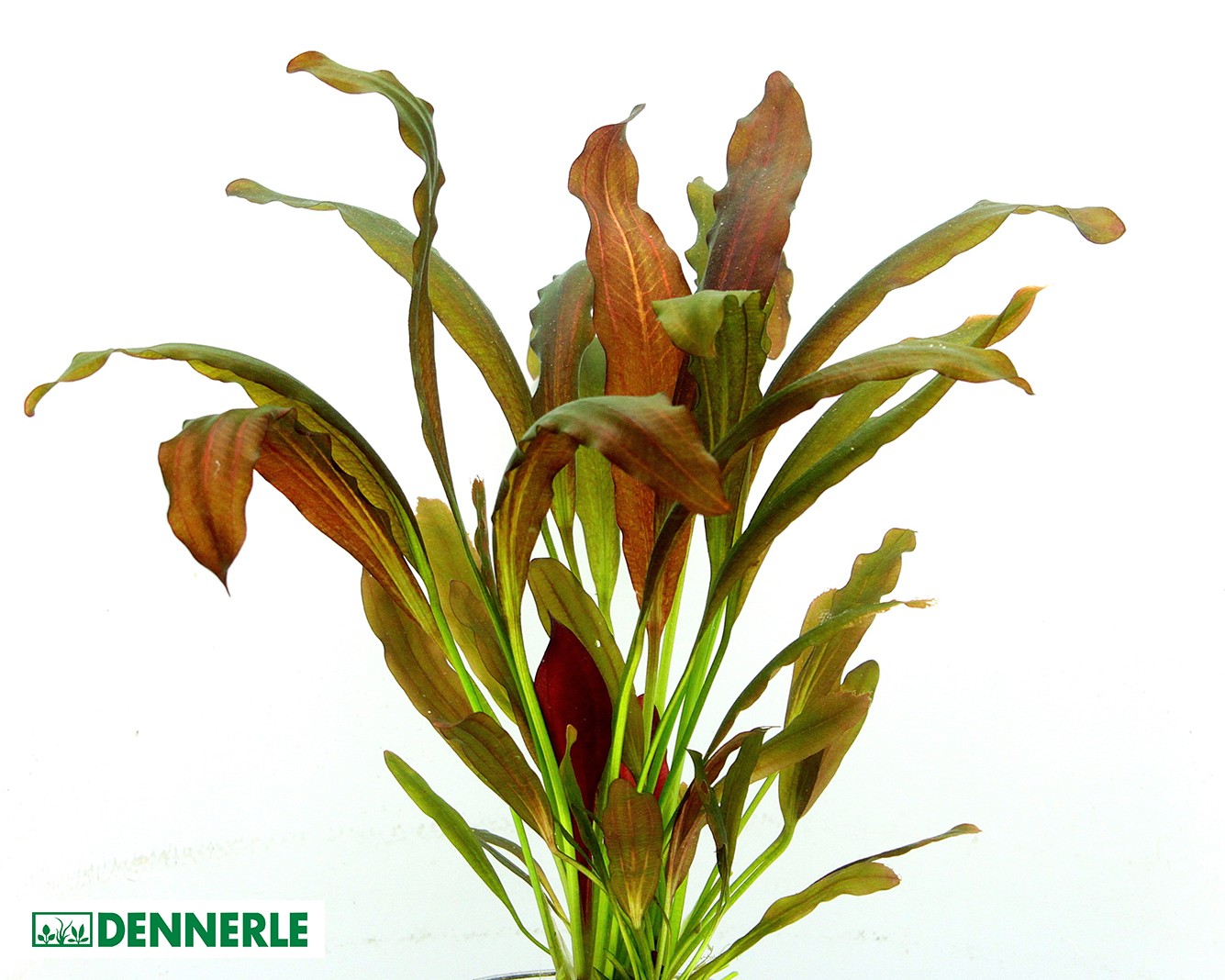
Echinodorus "Red Chameleon
A rather small growing variety with a height of 30 cm, which forms strong dark red heart leaves especially under a lot of light and with a good nutrient supply and an additional CO2 fertilization. The brighter the Red Chameleon stands, the more compact its growth remains. (Buy Echinodorus "Red Chameleon")
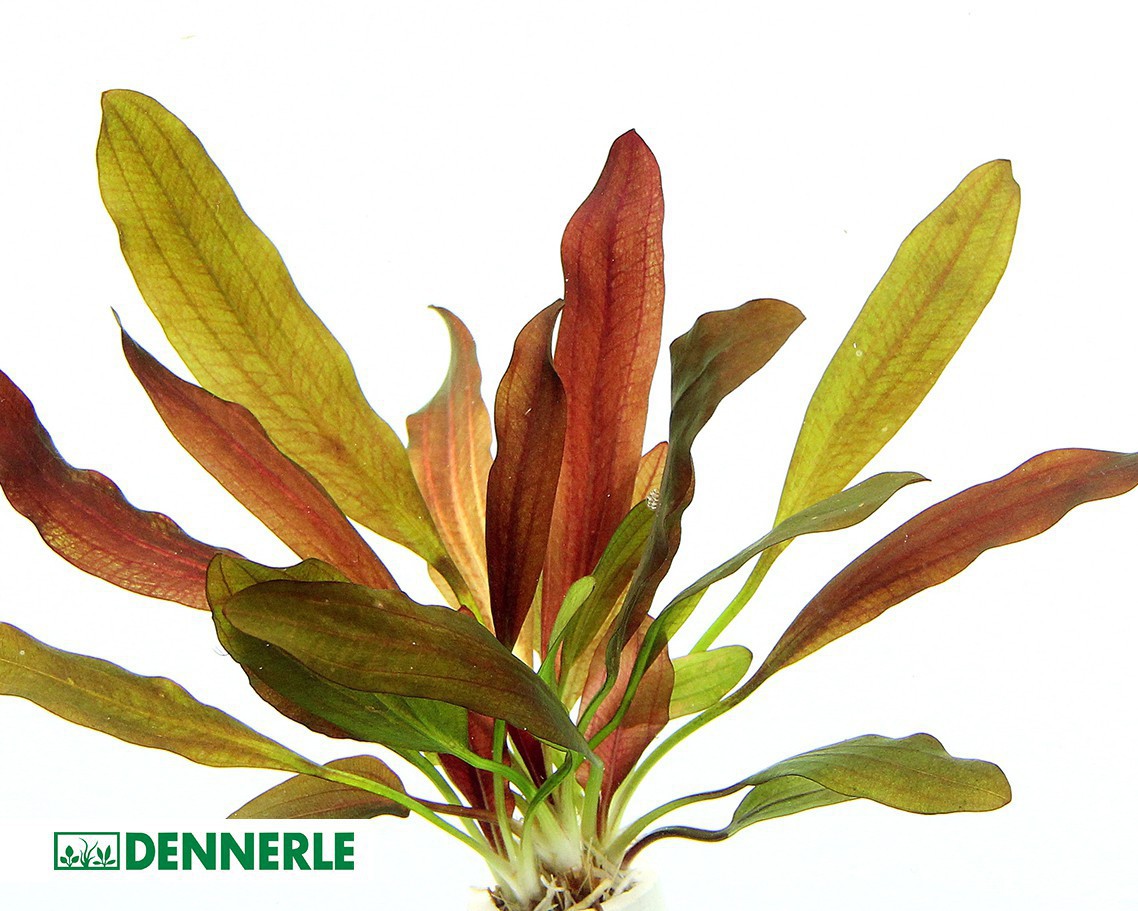
Echinodorus "Green Chameleon
The Green Chameleon is the result of a cross. Emersed, Green Chameleon grows pure green, but underwater it becomes colorful: leaf blades are slightly wavy and initially sprout bright green. Older leaves can develop olive green to wine red color accents under a lot of light. (Buy Echinodorus "Green Chameleon")
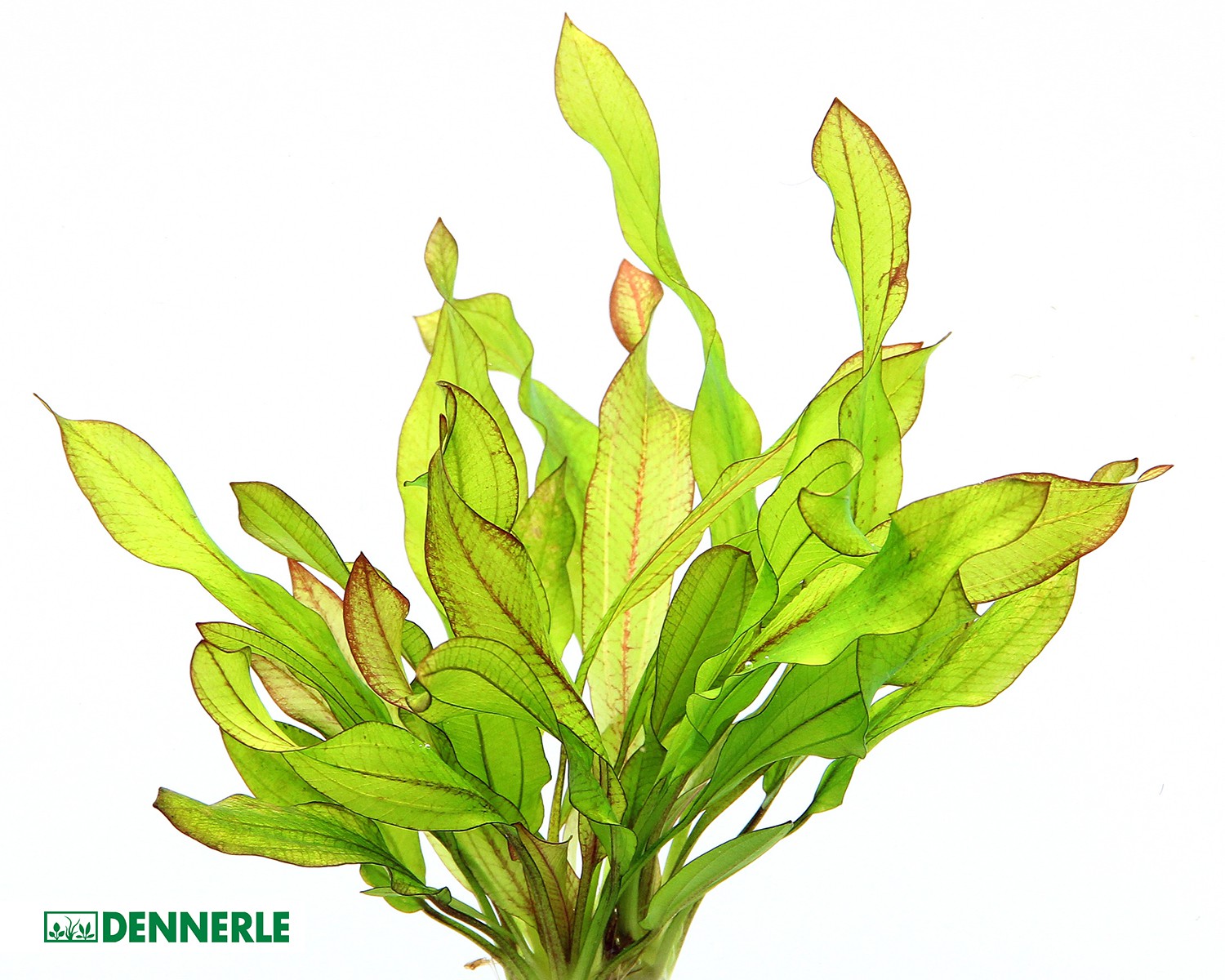
Echinodorus "Scarlet Snake
This new variety is a narrow-leaved Echinodorus variety that stands out with its deep dark red color. The leaves are only 2-3 cm wide and grow up to 60 cm long, making the Scarlet Snake suitable for rather large aquariums. Especially in combination with broad-leaved green varieties, great contrasts result. (Buy Echinodorus "Scarlet Snake")
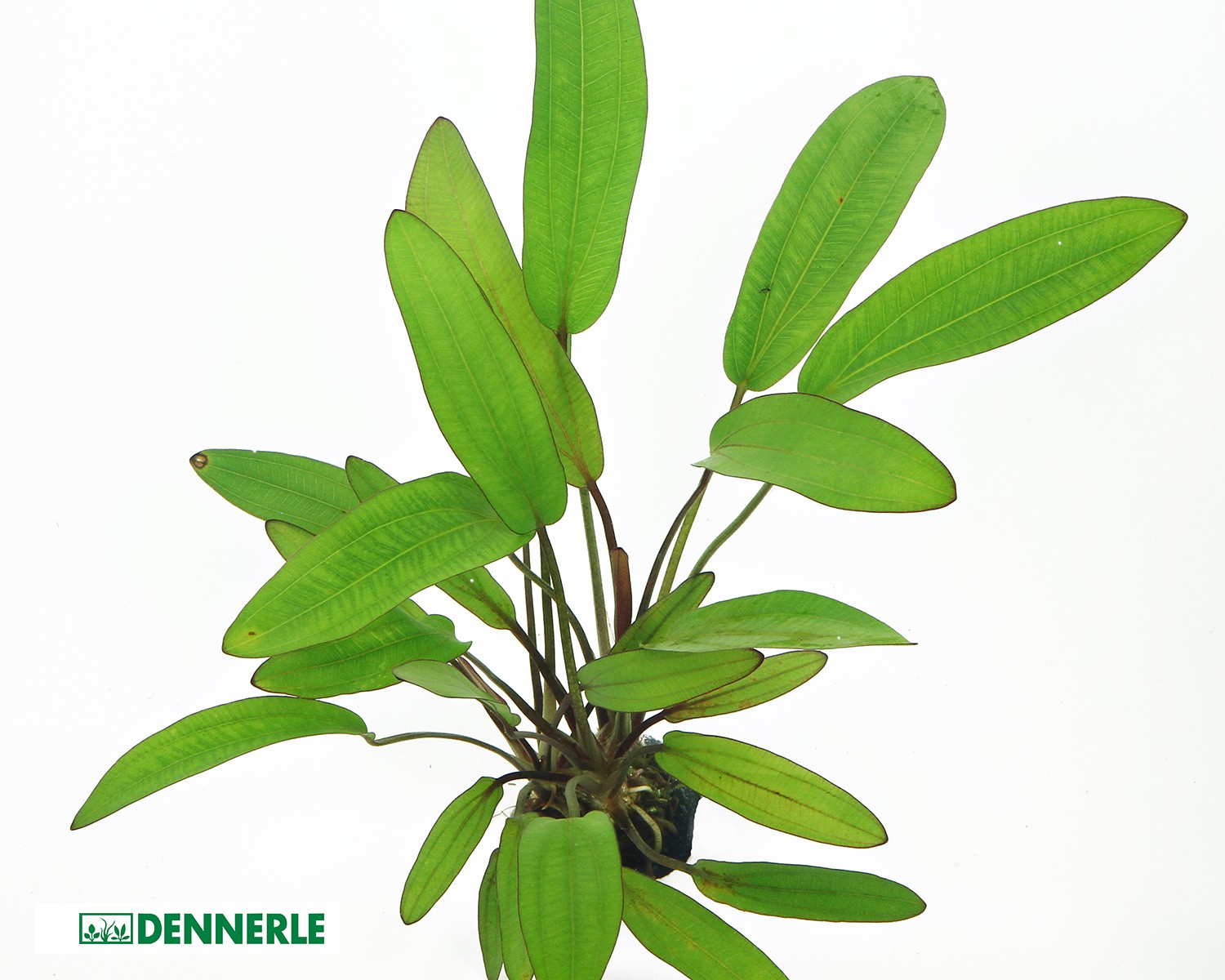
Echinodorus Jungle Star No. 2 "Little Bear
A red-leaved variety that has rust-red to dark red leaves depending on the lighting in the aquarium, in the terrarium the leaves are mostly green. They look beautiful with their small dots. The "Little Bear" only grows to about 25 cm tall and for this reason is excellent as a solitary for smaller aquariums. (Buy Echinodorus Jungle Star "Little Bear")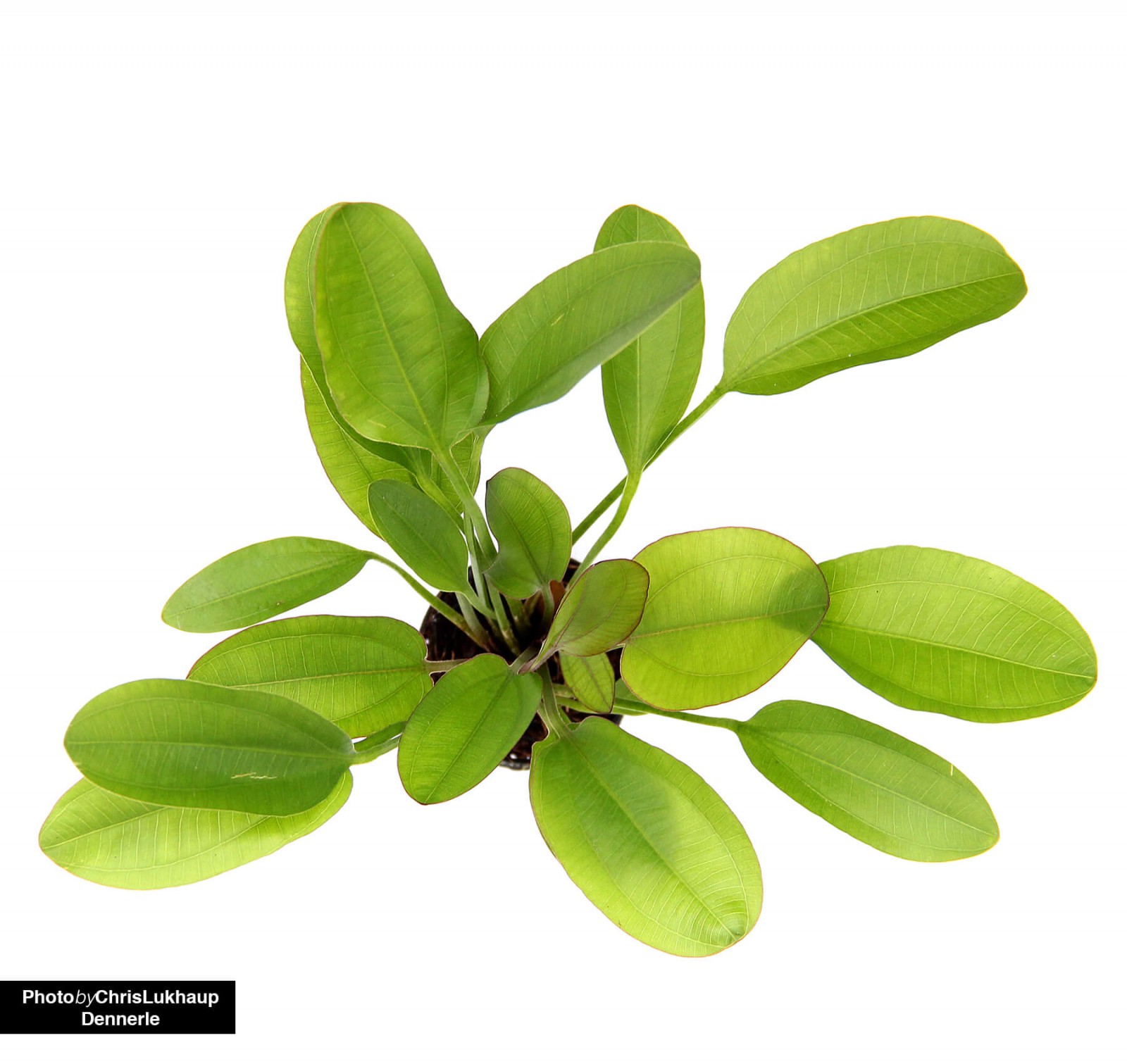
Echinodorus Jungle Star No. 3 "Python
The underwater form of this beautiful Echinodorus, quite large at up to 60 cm, is narrow with ribbon-like vividly spotted leaves - much like a python snake. Under plenty of light, the plant sprouts reddish leaves that later turn green. Jungle Star No. 3 is an impressive solitary especially in larger aquariums and terrariums. The land form of the leaves is much less narrow and long. (Buy Echindorus Jungle Star "Python")
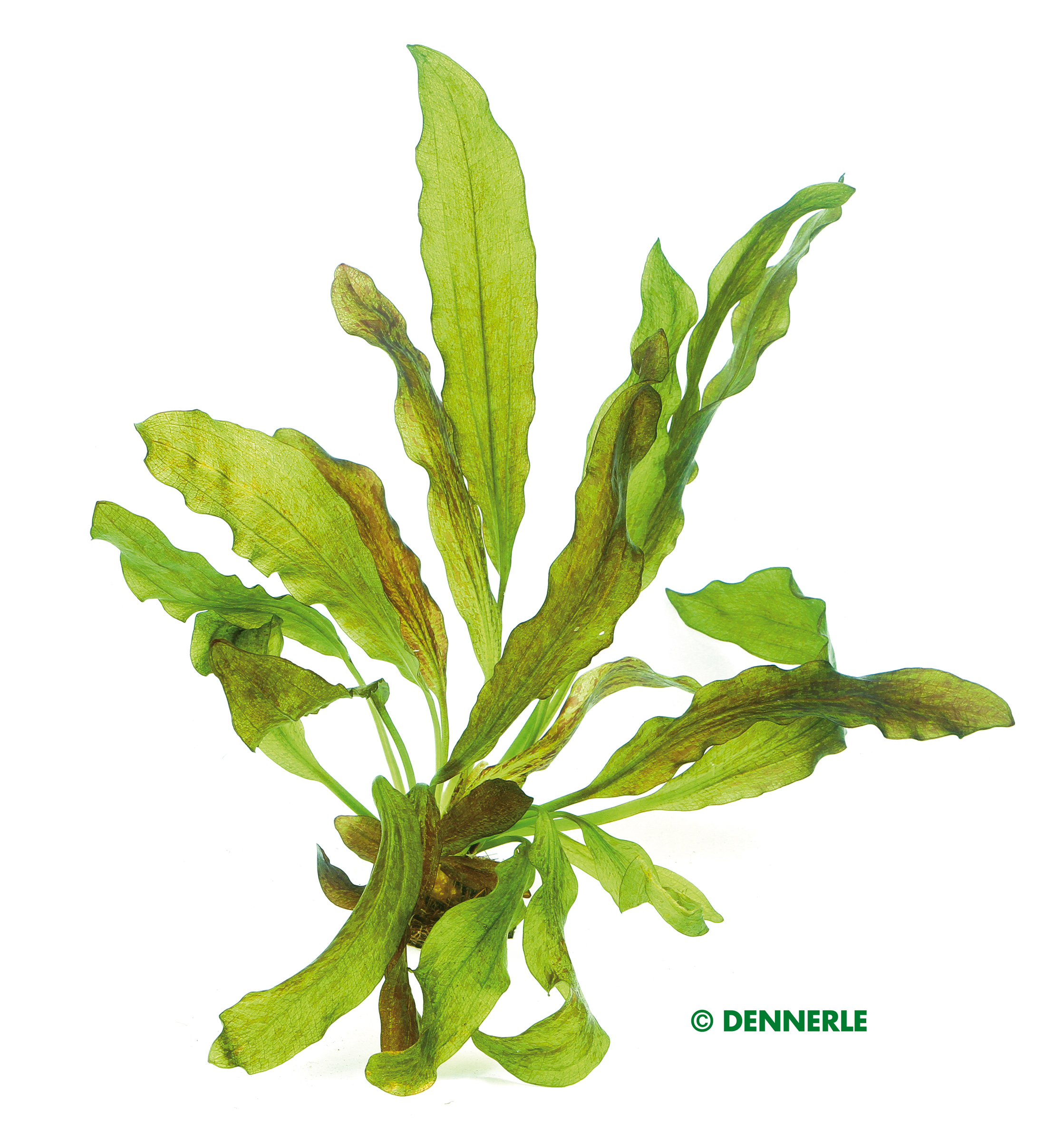 Echinodorus Jungle Star No. 3 "Python
Echinodorus Jungle Star No. 3 "Python Echinodorus Jungle Star No. 9 "Spotted Harbich"
When grown emersed, the leaves of this Echinodorus are almost circular, and underwater they stretch out a bit. The olive green submerged leaves have a reddish mottled pattern, while the emersed leaves are a distinctly lighter green. The leaf margins of this beautiful cultivar are distinctly wavy in the underwater form. (Buy Echinodorus Jungle Star "Spotted Harbich")
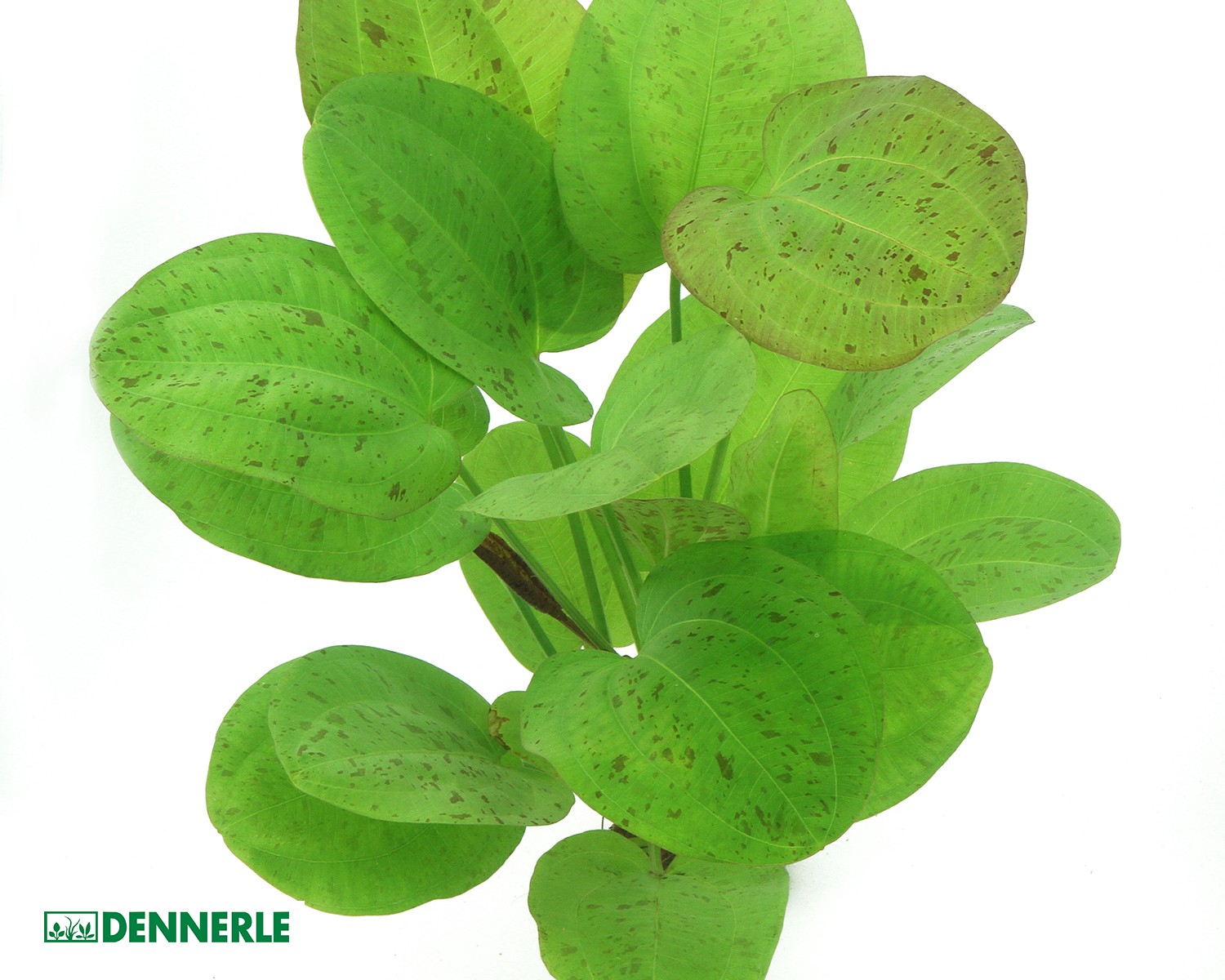
Echinodorus Jungle Star No. 14 "Tornado
This relatively new variety is a cultivar of Echinodorus "Ocelot", it stands out with exceptionally spotted leaves. Emers they grow smooth and in egg shape, but under water the leaf blades twist and make a twisted impression like after a whirlwind. Under good conditions, the new shoots are bright red. With a growth height of 30 cm it remains rather small and fits well in medium sized tanks. (Buy Echinodorus Jungle Star "Tornado")
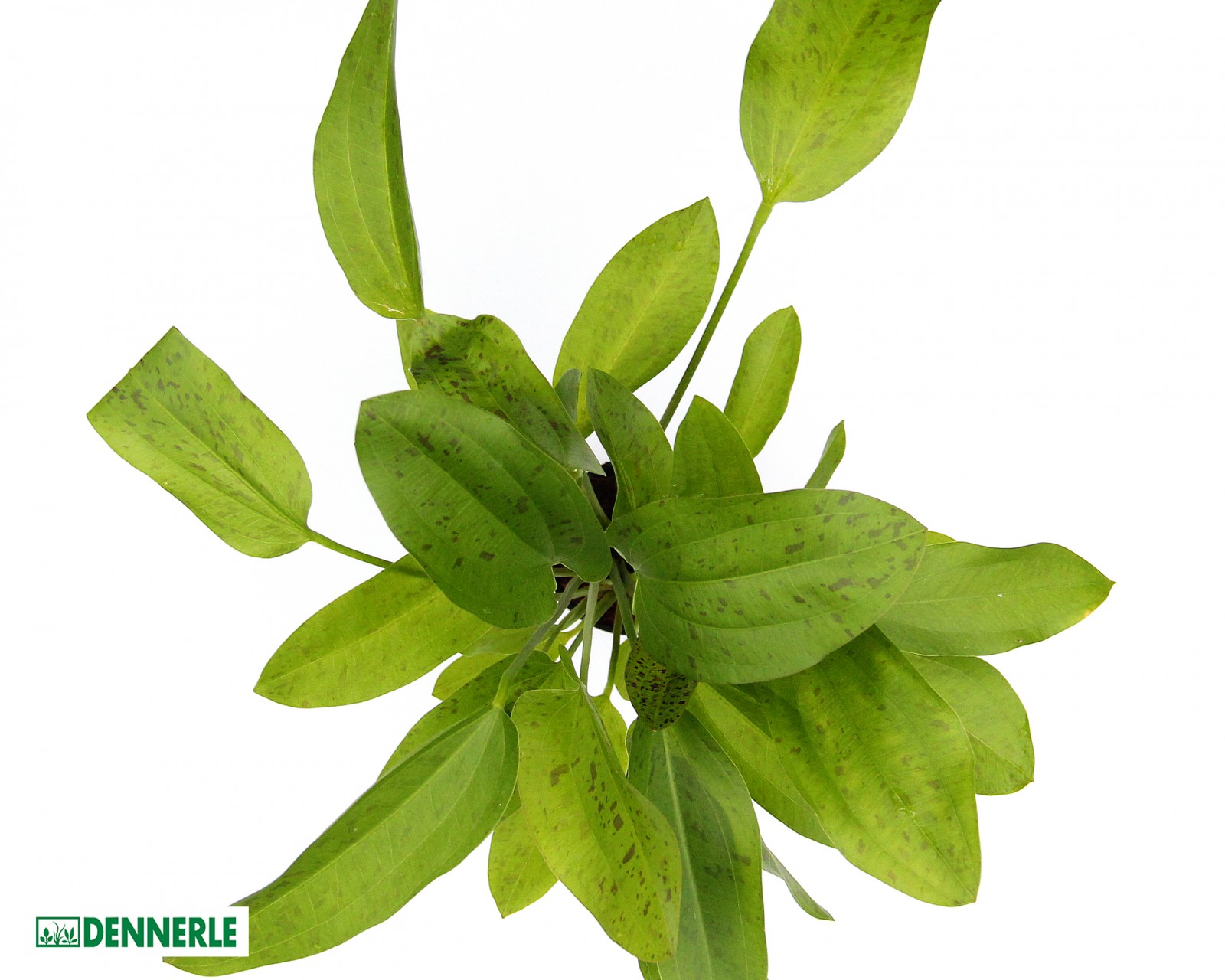
Echinodorus "Ocelot
A classic among echinodores is the striking "Ocelot" with its striking dark spots on an olive green background. This variety grows very well and quickly and sprouts narrow elliptical leaves. The shoots are brown-red to dark red. When grown emersed, the plant is almost pure green with dark spots. It grows only about 30 cm tall, making it suitable for smaller aquariums. (Buy Echinodorus "Ozelot")
Echinodorus palifolius - Argentine Frogspoon, Stiff-leaved Frogspoon
Echinodorus palifolius is often referred to as Echinodorus argentinensis. The rather pointed green leaves grow to 60 cm tall and are pure green. The Argentine Frogspoon is especially well suited for open aquariums, it sprouts strong overwater leaves and also sends its flower stalks with the beautiful white flowers upwards above the water surface. Also very nice in the water part of a large terrarium or paludarium. (Buy Echinodorus palifolius "argentinensis")
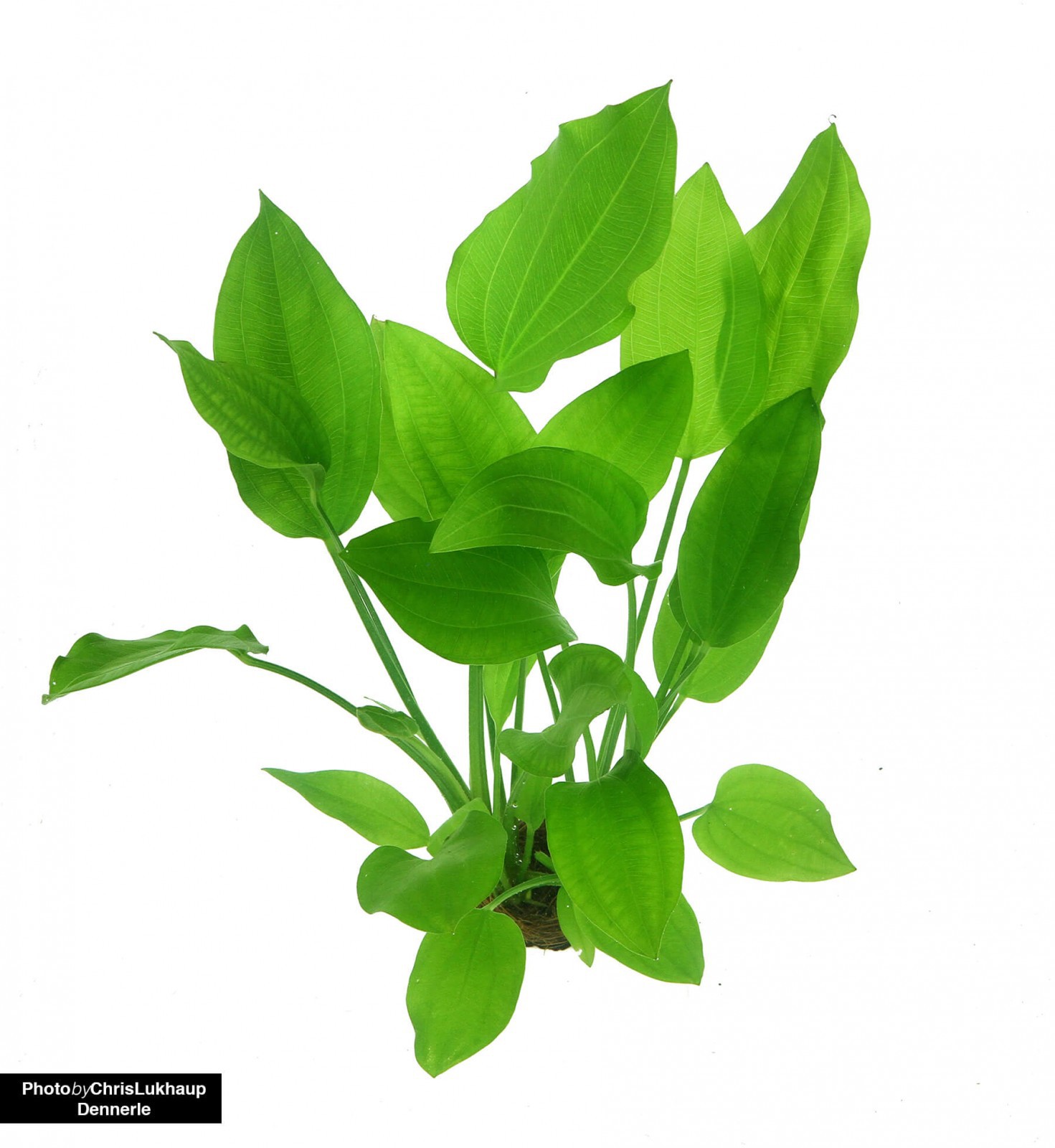
Echinodorus cordifolius - mini frogspoon, heart-leaved sword plant
A somewhat smaller remaining Echinodorus is the Mini Frogspoon with only about 25-30 cm growth height. With its broad light green leaves, it contrasts beautifully with fine-feathered and colorful stem plants. Under plenty of light, the leaf rosettes remain beautifully compact. Echinodorus cordifolius likes to grow above the water surface, making it a wonderful fit for open tanks and paludariums or aquaterrariums. (Buy Echinodorus cordifolius "mini")
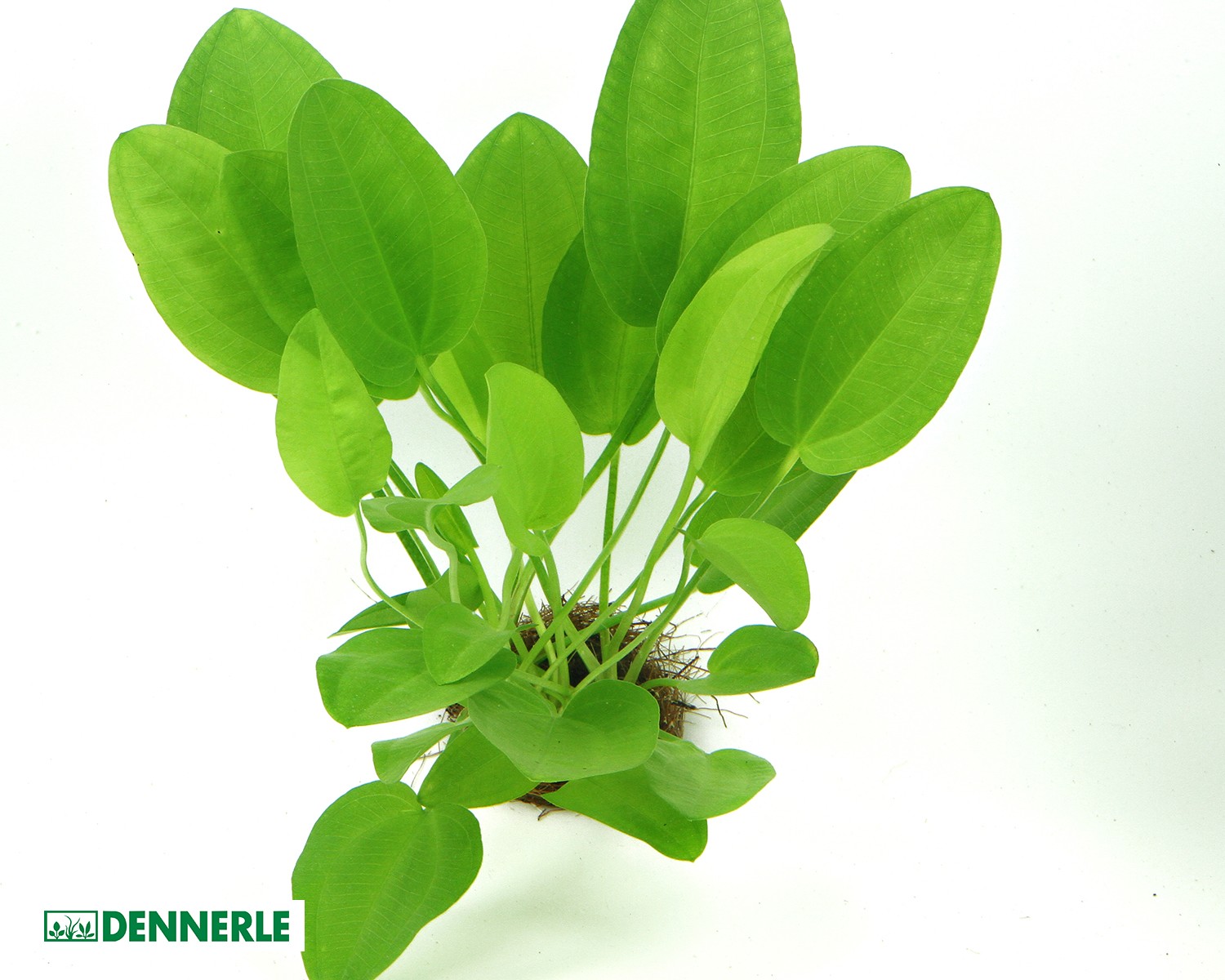
Echinodorus cordifolius "Harbich red" - Reddish heart-leaved sword plant
The reddish variant of Echinodorus cordifolius is conspicuous for its reddish edged and overhatched young underwater leaves, a phenomenon that is especially apparent under a lot of light. The reddish variety of Echinodorus cordifolius remains somewhat smaller than the parent form and with a growth height of only 20-30 cm also fits into cubes with a capacity of 60 l or more. (Buy Echinodorus cordifolius "Harbich red")
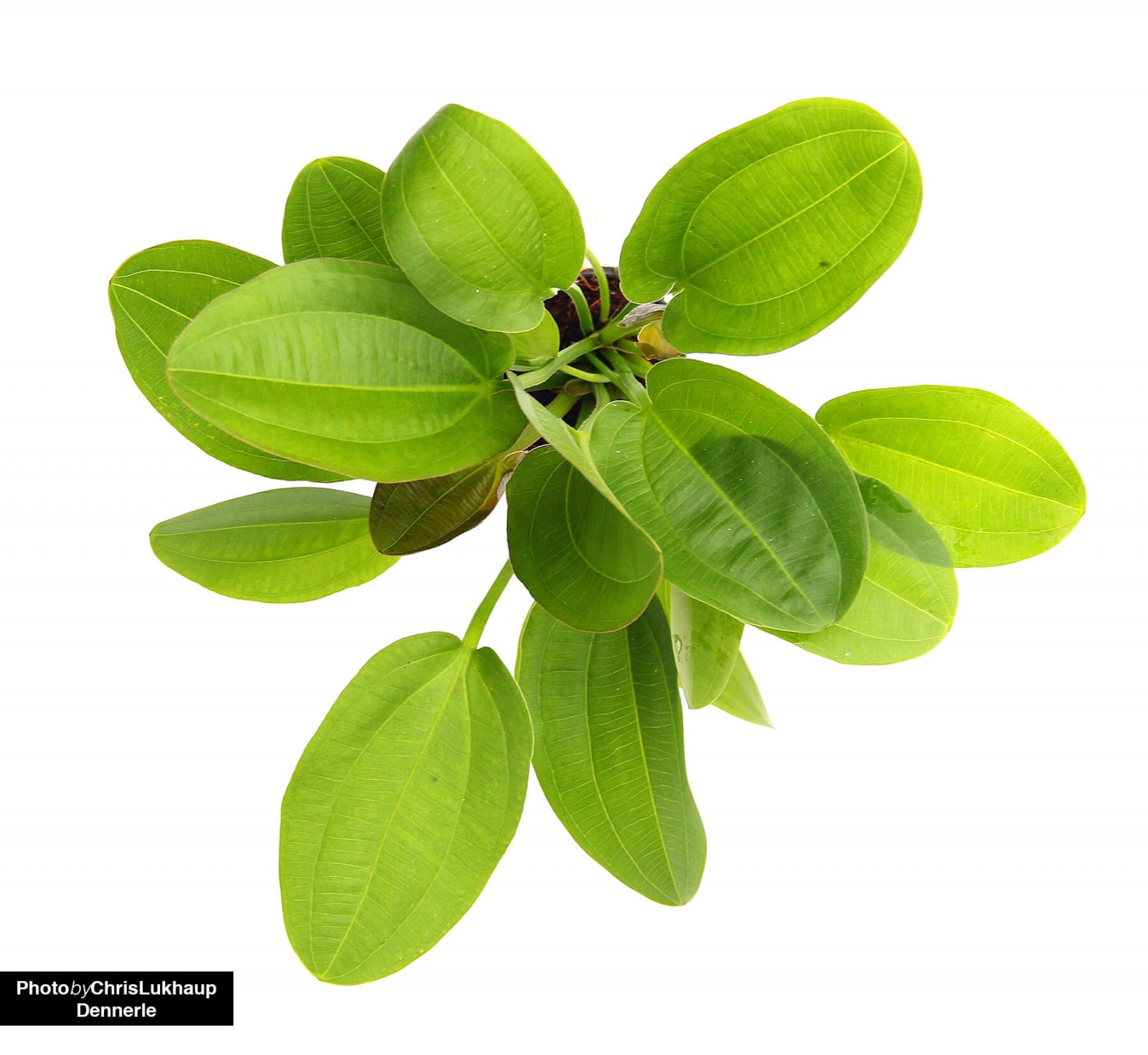
Helanthium tenellum (Echinodorus tenellus) - Grassy sword plant
The Grassy Swordplant was also formerly listed in the genus Echinodorus, but it has since been placed in the genus Helanthium due to various characteristics (for example, its propagation by runners) and is now known as Helanthium tenellum. It is an excellent groundcover for the foreground and needs no more than medium light to form a beautiful lawn. CO2 fertilization helps tremendously, of course, and ensures dense, healthy growth. (Buy Helanthiukm tenellum (Echinodorus tennelus))
